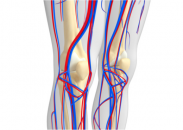The combination of optimal medical treatment plus angioplasty plus supervised exercise seems to be the first line of treatment for patients with intermittent claudication, in terms of maximum walking distance and best quality of life. This combination requires a multidisciplinary team for the best possible results. The aim of this study was to conduct a…
Improved Outcomes after Lower Limb Revascularization
Operator ability combined with improved and diverse devices for lower limb revascularization has clearly increased in the last decade. However, is this technical feasibility we did not use to have translating into better clinical outcomes for patients, or is it simply inflating our interventionist egos? This study aims at answering the question above by identifying…
Mortality and Paclitaxel Devices, Data Are Aligning
5 years ago, several prospective randomized studies confirmed paclitaxel coated balloons were safe and effective in femoropopliteal territory. However, a recently published meta-analysis of heterogeneous studies including both paclitaxel coated balloons and drug eluting stents has linked these devices to mortality. In addition, higher doses were associated to higher mortality, both at 2 and 5…
EuroPCR 2019 | EFFPAC: New Peripheral Paclitaxel Coated Balloons, Efficacy with no Sign of Mortality
Paclitaxel coated balloons in peripheral territory have been under the spotlight for alleged increased mortality, which even though not observed in this study, experts insist, calls for new studies with enough statistical power. Compared against plain balloon angioplasty, paclitaxel coated balloons resulted in improved patency and less revascularization at 24 months in superficial or popliteal…
Drug-Eluting Stents vs. Balloons While Paclitaxel Is in the Eye of the Storm
Even after the US Food and Drug Administration (FDA) issued an alert on paclitaxel devices in patients with femoropopliteal artery disease, which caused the interruption of a few ongoing studies, reality indicates that the efficacy of these devices has been proven and that they are still used. The increased mortality observed in the meta-analysis that…
FDA Alert on Drug-Coated Balloons and Stents in Femoropopliteal Artery Disease
The US Food and Drug Administration (FDA) has issued an alert on the potential long-term risk of paclitaxel-coated balloons and paclitaxel-eluting stents in patients with femoropopliteal artery disease. This agency is evaluating signals of increased long-term deaths among patients with femoral or popliteal artery disease treated with paclitaxel-coated devices in a recent study. In…
HIV and Peripheral Artery Disease: Acknowledging the Association
The role of human immunodeficiency virus (HIV) in the development of vascular disease (specifically peripheral artery disease) remains unclear. Is the virus per se the direct cause of this disease or is it a consequence of dyslipidemia, one of the adverse effects of antiretrovirals? This study looked into the effect of HIV infection on peripheral…
Mortality in Peripheral Vascular Disease Drops Due to Revascularization
This cohort study shows that, from 2006 to 2015, the overall survival rate increased and the risk of major amputation decreased following lower limb revascularization. These population observations indicate that outcomes after lower limb revascularization have improved during the assessed period, and so have the centralization and specialization of interventional services. The availability and diversity…
What’s New in the European Guidelines on Peripheral Arterial Disease
Since the last version of the European guidelines on the diagnosis and treatment of peripheral arterial disease in 2011, there have been many trials and registries that warrant guideline adjustments in many aspects. The first novelty is the teamwork that gave way to these guidelines, which were written in collaboration with the European Society of…
- 1
- 2







